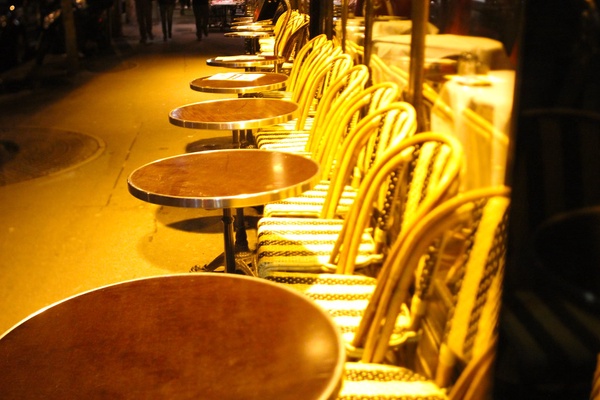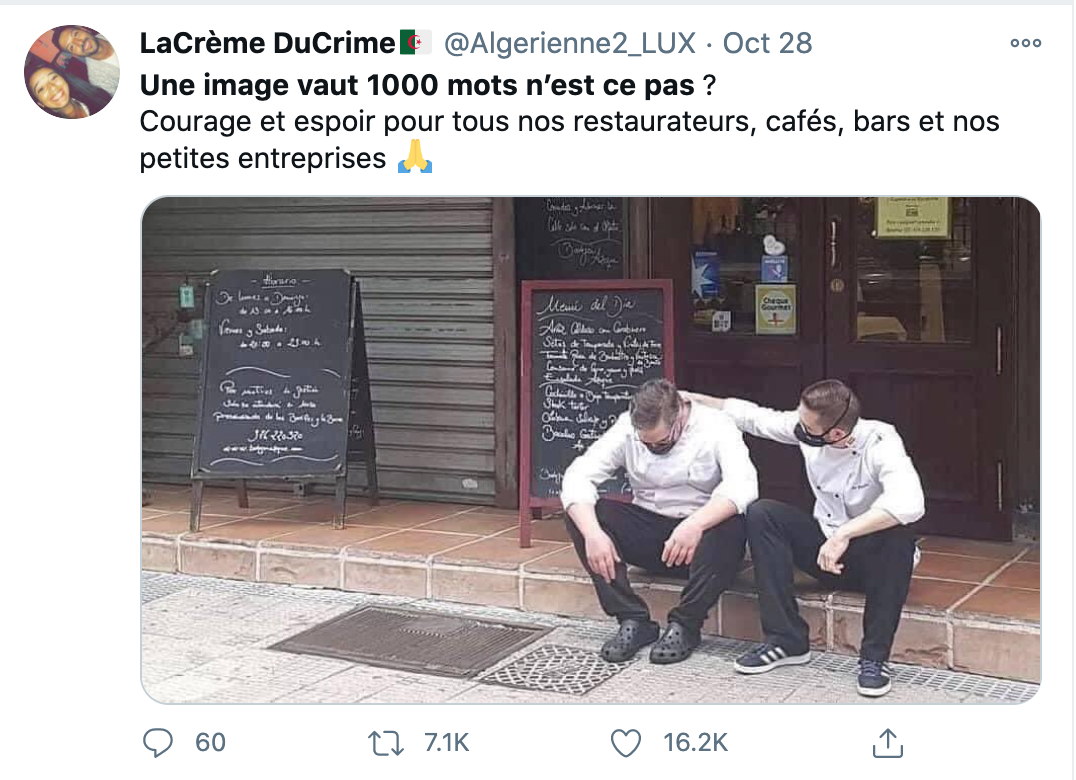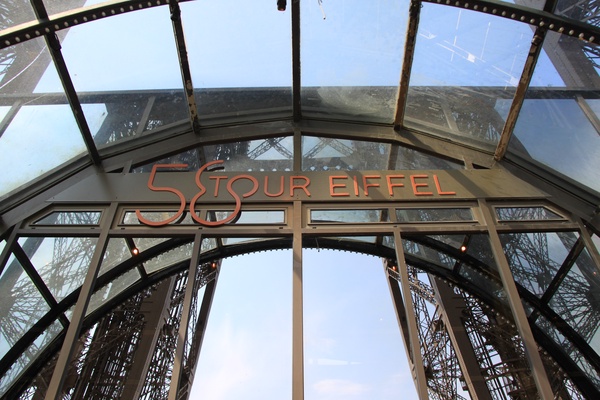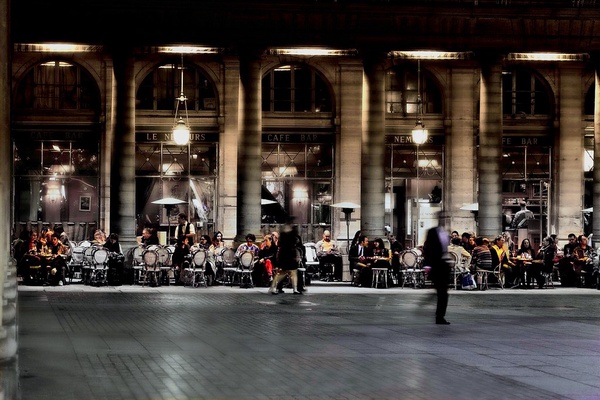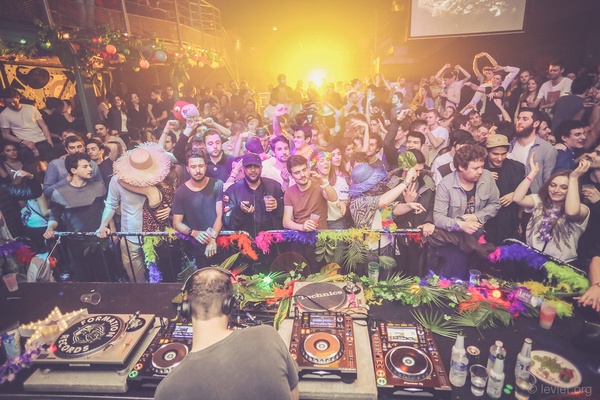Paris Café and Club Culture Shuttered Again in Lockdown
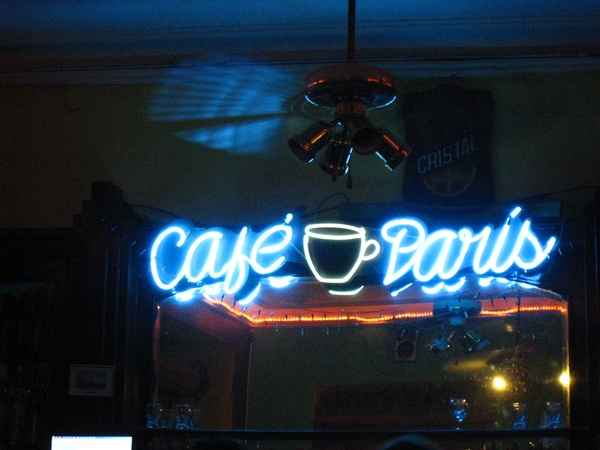
Paris is not only the City of Light, it’s also the city of night life — bustling café terraces in Le Marais and Left Bank, exquisite restaurants in every arrondissement, and crowded clubs where the drinking and dancing go till dawn.
Nightife in Paris has gone quiet however. The city was shut down with the second Covid-19 wave in the fall. First came the curfew, as restaurants and cafés were forced to close early. Then came lockdown. Restaurants, cafés and clubs were shuttered — except for take-out meals from restaurants. After the closing of all non-essential businesses, the pandemic has left France’s hospitality industry fighting for its survival for a second time since the coronavirus hit. Many are wondering if the city’s cafés, restaurants and clubs will ever manage to recover.
In the 16th arrondissement, Brasserie Cezanne owner Michel Puech says restaurants have been doing their best to adapt to the Covid crisis. "This is terrible news for us because we were just starting to get better since the lockdown lifted at the beginning of summer,” he says. “Now it’s going to be hard again."
Like many other restaurants around the city, Brasserie Cezanne teamed up with UberEats to compensate for losses suffered during the lockdown. "We thought that the best idea would be to offer good quality burgers with fries because it is the easiest thing to deliver, considering the staff we have at the moment,” says Peuch. “It is also one of the most common dishes Parisians tend to get when ordering food."
An empty Paris café terrace. Image credit: Creative Commons.When the first coronavirus wave hit France in the early months of 2020, hundreds of French restaurants teamed up with food delivery apps like Deliveroo and UberEats. But these partnerships were not enough to prevent restaurants from laying off staff or closing down. French President Emmanuel Macron tried to help restaurants by exempting them from rent and utility bills. But in an industry so dependent on customer service, these efforts were not effective.
By April, about 25 percent of restaurants risked never reopening; and 55 percent of small and medium-sized restaurant owners were expected to declare bankruptcy as a direct result of the pandemic. By the end of April, the pandemic had cut total economic activity by 35 percent. The hospitality industry was hit the hardest, as activity fell by 91 percent since the beginning of the lockdown.
A Twitter post showing the desperate state of restaurant workers. Image credit: @Algerienne2_LUX on Twitter.
In May, the Parabere organization, whose goal is to help and promote female-owned small businesses, launched a petition to incite Macron to help the struggling hospitality industry. Parabere’s petition called for a reduction in business taxes for all restaurateurs that sourced at least 90 percent of their ingredients from local or sustainable producers. Although French banks injected 1.3 billion euros into businesses, many owners were unsatisfied, demanding the value-added tax rates be reduced to give restaurants an even bigger boost. No matter what tax breaks or government aid restaurants received, the only thing that could truly guarantee their survival was the reopening of their businesses.
Good news came in May with deconfinement. Finally, restaurants were allowed to reopen. Not without strict measures, however. Paris mayor Anne Hidalgo announced later that month that while, “entire streets would be available to restaurants in order to facilitate social distancing, only outdoor service would be allowed.”
By June the deconfinement process was in full motion. The official summer activity became outdoor excursions where parks welcomed picnics, the seine bustled again with cyclists and runners and, most importantly, eating out was back in season. After months of loss, the restaurant industry finally experienced immense profit. Terrace culture had given restaurant-goers and owners hope that things were returning back to normal. But it is near impossible to follow social distancing measures in a social environment, especially when that environment calls for eating and drinking.
Tourist attracrion: The Eiffel Tower. Image credit: Creative Commons.
Now that Paris has been through the second wave of curfew and lockdown in the fall, the optimism of the summer months after déconfinement were, in retrospection, only a brief respite from a year filled with crisis. In October, Macron had announced a 9 p.m. curfew for France's biggest cities, including Paris, Lyon and Lille. The curfew, although anticipated, was extremely unpopular, forbidding dinner outings and forcing restaurants to, once again, close at night. Following this rule, all restaurants had to close no later than 8:30 p.m., forcing restaurants to close their kitchens at 8 p.m. and kick everyone out.
"This is a death sentence for us," celebrity chef Philippe Etschebest told RFI in an interview. "We are in shock. We've done everythign that needed to be done and now we're being closed."
Students in Paris are affected like the French themselves and have had to adjust their dining habits and plans for evening activities. Restaurant enthusiast, Javier Houdelot, a 25-year old Salvadorian student pursuing his master's degree at ISC Business School Paris, adapted to an earlier dinner during curfew. "I honestly eat out a lot, around three to four times a week," he says. Houdelot, like many Parisians, did not stop eating out because of the curfew. "I consider myself an uncomplicated person; if the government is sending me home at nine p.m., I will have dinner at six-thirty.” Ana Elena Poo Baiz, a 22-year-old AUP student, has also seen her dining habits changed. "I like to eat out about once or twice a week," she says. "If I had to choose my favorite restaurant in Paris, I think it would be La Felicità or any restaurant from the Big Mamma Group." With lockdown, however, that is no longer possible.
The crisis has been even worse for Paris bars and pubs. Unlike restaurants, which can sell take-out food, bars have been shuttered entirely. At The Highlander Scottish Pub, located in the 6th arrondissement for English speakers, business was suffering under the curfew regulations. Under the lockdown, the owners can’t pay workers out-of-pocket if the closures last too long. One of two pub managers, Cody Mannick, an AUP graduate student from Washington State, says: “In order to have the government pay for our salaries, we all have to have social security numbers. After the first lockdown, one of the owners spent a lot of time applying for our Social Security numbers, but most of us still haven’t received them”. The first lockdown and recent curfew has shot earnings at The Highlander to only, “60 to 75 percent of what it was making before the first lockdown,” says Mannick as the pub makes a large part of its income between two to five in the morning.
Paris café life before the lockdown. Image credit: Creative Commons.
A struggling economy has left many feeling that the lockdown is pointless, Mannick added. “I do understand the concern for those who are at risk, but I believe there is a better way to protect those at risk while not plunging the country into debt,” she says. But, jobs left in peril are not the only reason some are fed up with the lockdown. The overall nightlife atmosphere is missing and while official businesses like bars and clubs are forced to close because of health concerns, the rise in house parties have left people skeptical towards the lockdown’s practicality.
Aurellia Jocelin, 21-year-old graduate at the Institute of Marangoni, finds the lockdown useless. “Young people are going to find ways to work around the lockdown no matter what,” she says.
The Paris club scene, like bars, has gone completely dark. Paris is a big city, divided into 20 arrondissements, and almost all of them boast an active nightclub scene. Pigalle, once famous for being the red light district of Paris, is now famous for cabarets. The Latin Quarter, in the 5th arrondissement, and Le Marais, in the 4th, appeal to younger crowds like students for its budget-friendly prices. For the exclusive and expensive clubs, the 8th arrondissement hosts iconic clubs like L’Arc, Matignon, Raspoutine, Silencio, The Key, Medellin, Le Marta and Le Piaf that never go a night without a celebrity appearance.
“I have a passion for human relations, this is what nightlife is all about," says Adama Sambe, owner of clubs Chez Mila and Azur. "It is about being able to offer people places and events where they can meet new people or their own friends. It is being able to create new trends. We live in one of the most attractive cities in the world. So it’s very important to keep people entertained in order to go beyond our customers’ expectations.”
Before the Covid crisis, the Parisian nightclub scene was already changing. Most club owners shifted towards a new trend: festive restaurants. Some establishments listed as restaurants had doubled as a club and it saw massive popularity. The most notorious of these festive restaurants are Victoria, NOTO and Matignon and, for a short while, these establishments supplemented as clubs during the onset of the pandemic. Festive restaurants were not the only establishments to grow in popularity in face of the pandemic. Boat parties on the Seine like Sambe’s Chez Mila and Azur also became a saviour for nightlife, but not without strict regulations. “I opened my two businesses right after quarantine and the restrictions were simple, but tough,” says Sambe. “10 people maximum per table, one meter between every table, masks had to be worn and hydroalcoholic gel had to be everywhere.”
Today Paris party culture is being challenged. Again, outside movement is restricted to one kilometer for one hour, non-essential businesses are closed and attestations must accompany pre-approved outings. As nightclubs are forced to shut-down once more, Parisian nightlife has been put on hold, but not without a fight.
Elie Benhamou, a 22-year-old student at ECE Paris, used to go out every week clubbing to Raspoutine. “Since COVID and the lockdowns and curfews, I try to find other options, like house parties in and outside of Paris.” Even with the new restrictions, Ellie still sees his friends every week for house parties. In order to keep party culture alive, youths have traded clubbing for house parties, an easier and cheaper alternative to finding professionally organized parties during a pandemic. Still, amidst a decline of party-goers, club owners are not claiming defeat just yet.
Nightclubs in Paris have gone dark in lockdown. Image credit: Creative Commons.
Audren Dimitris, known around the city as one of the most successful club owners in Paris, has 20 years of experience as owner and co-founder of clubs 79 Paris, la Calvados, Heritage Paris, The Key Paris and Medellin Paris. Clubbing in Paris has always been a fight against exclusivity. From long lines, to boy-girl ratios and bouncers having the final say on whether you can enter or not, nightlife in the city is never void of selectivity.
The pandemic has had an undeniably devastating effect on Dimitris’ businesses. “I would have sold everything if I knew what was coming," says Dimitris. "I can barely even afford rent anymore.” But, in spite of government regulations and inadequate incomes, club owners like Dimitris are still trying to keep nightlife culture alive. “Some fellow club owners will still open their doors to private parties or small meetings with their own friends," he says. "Even before, with the curfew put in place, it functioned the same. Everything was behind closed doors, invite-only and super exclusive.”
Although party culture in Paris remains active despite the pandemic, especially in secret locations, some have chosen to curb their partying habits because of health concerns. Tania Radkova, a 21-year-old AUP student majoring in International Economics, used to party almost every weekend and weekdays, occasionally, before the Covid crisis. “I used to go very often to Medellin and Matignon and l’Arc from time to time,” she says. Now Radkova avoids being in crowded places and going out to party. “I do overnight gatherings at my place now, only with my closest friends,” she says.
The club scene hasn't died completely, it has, instead, gone underground. Now more than ever people are searching for a way to forget the stresses of the pandemic and partying, although risky, allows people to escape the problems of the world through drinking, dancing and flirting. The first deconfinement saw a surge in party-goers and it is doubtful that the second time around will be much different. If anything can be learned from this past summer, it is that people just want to go out. Although struck with financial losses, party-goers and club owners alike are optimistic.
Some young Parisians are organizing clandestine parties that attract hundreds of revelers. Known as “fêtes sauvages”, these parties are sometimes held in houses and lamp-lit soirées in the woods, like the Bois de Vincennes on the edge of Paris. While French police are cracking down on these secret gatherings, they have become increasingly popular with French youth.
As we head into the Christmas season, owners of restaurants, bars and nightclubs are expecting things to return to normal as lockdown is gradually lifted. Though as Parisians slowly return to normal life, Paris nightlight may not be revived until early in the New Year. Some fear it may never be the same.

